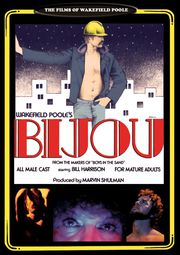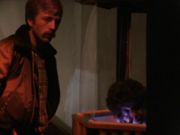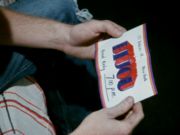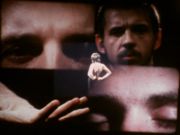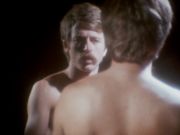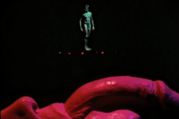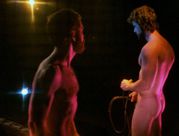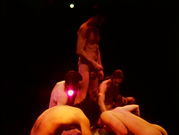Wakefield Poole's Bijou
 |
| You need to Login or Signup first. |
| Director: Wakefield Poole
Cast: Bill Harrison, Lydia Black, Tom Bradford Year: 1972 The Movie: The second feature directed by filmmaker Wakefield Poole, 1972’s Bijou (which follows his earlier debut, Boys In The Sand) is a tough film to classify. While there’s no denying that this is a completely explicit adult feature made with an all-male cast, the film is just as much a work of art house surrealism as it is gay porno. The story is deceptively simple: a construction worker (Bill Harrison) finishes his shift for the day and leaves the lot where he works to head back to his apartment. As he’s crossing a busy Manhattan street a Mercedes Benz collides with a woman in the middle of the crosswalk. She is struck down, presumably dead, and no one seems to notice when the construction worker steals her purse. He heads back to his apartment, drinks some juice and goes through the contents of the purse. Along with a wallet and some lipstick, which he licks, he finds a printed color invitation with only the word BIJOU in big, bright letters and a Prince Street address printed underneath. He hops into the show and Poole’s camera lingers on his manhood as he soaps himself up. From there, he puts his clothes back on and heads out into the street. He finds the address and heads inside where, after climbing a few flights of stairs, he hands his invitation to a haggard looking woman sitting behind a box office window reading a wrestling magazine. He heads inside, the word BIJOU in lights above him, and he enters a black room. A sign lights up and the words on it instruct him to remove his shoes. He does, and then a second sign lights up and instructs him to remove his clothes. Now completely nude, he wanders further into Bijou where he sees massive abstract sculptures, some quite suggestive. He then watches as four separate films are projected onto a wall, each one occupying a corner of the screen and featuring a man masturbating. Projected into the center of this is footage of the woman who was hit by the car earlier. After watching the films the lights dim and the construction worker lies down as a few men head into the room and an orgy ensues. With Bijou, Poole tosses aside typical narrative conventions in favor of mood and atmosphere. We know nothing about this construction worker character. Though his apartment is adorned both with pictures of naked women and a large poster of Jesus Christ his sexual orientation is left up in the air. Obviously further events transpire that would indicate his preference is men but we know not whether this is his first homosexual experience or if he’s typically hanging out in ten meat packing district looking for rough trade, though the freeze frame over his smiling face when he leaves the theater indicates he did at least have a good time. The lack of any typical character development here actually works in the movie’s favor as it leaves all of this up to the viewer to decide. As such, Poole’s film serves not only as something to arouse those intrigued by the carnal side of homosexuality but also to ensure that there’s more to the visual side of this than just a bunch of well-built men getting to know one another in the most intimate sense imaginable. Poole’s background in theater becomes evident in the scenes that take place inside. Bright, bold and colorful lighting pours over the participants as it would on a stage. It makes for some interesting visual contrasts. While the lack of narrative and explicit content will no doubt be a deal breaker for some, as work of outsider art Bijou is not only historically significant but technically impressive as well. |
| 2015-05-06 18:58:22 |
| 688.75 MB (722,207,385 bytes) |
| 1244 |
| 1 files |
